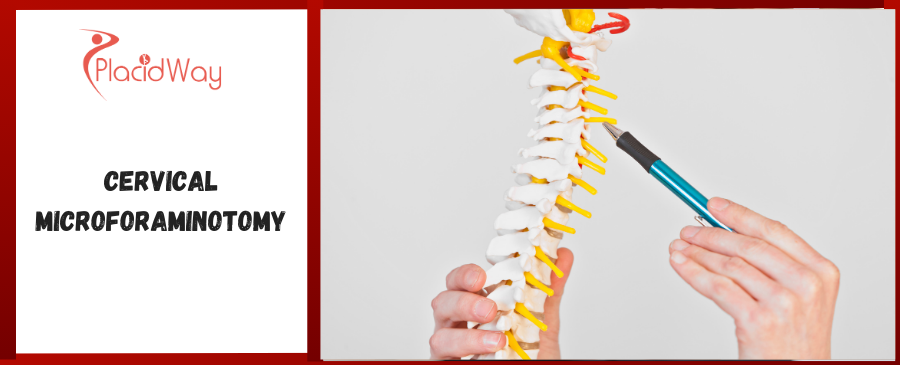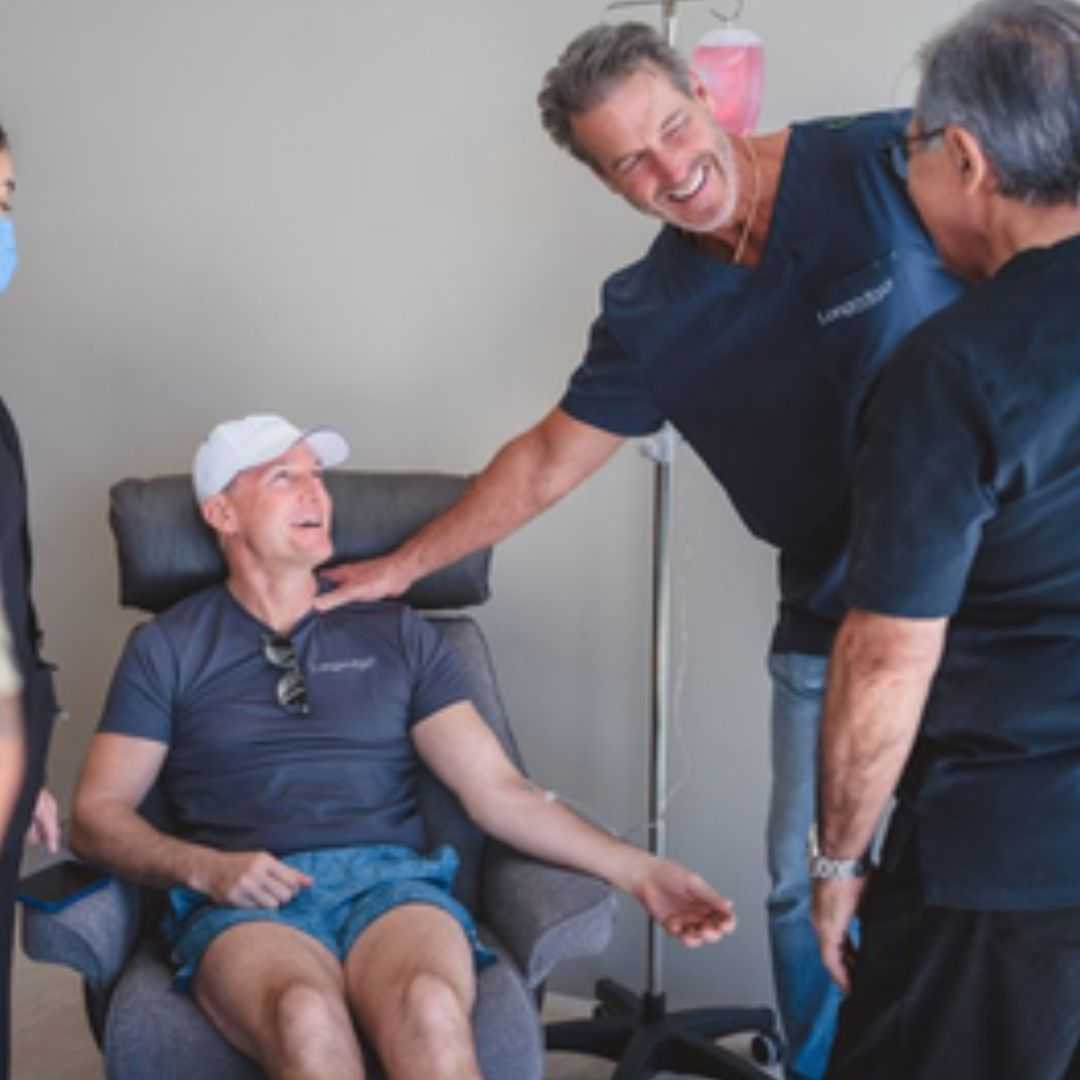
Finding Lasting Relief: Understanding Cervical Microforaminotomy for Neck and Arm Pain
Living with persistent neck pain that radiates into your arm, hand, or fingers can be debilitating. This kind of discomfort, often accompanied by numbness, tingling, or weakness, is a clear sign that a nerve in your cervical (neck) spine might be compressed or "pinched." When conservative treatments like physical therapy, medication, or injections don't provide sufficient relief, a highly effective and minimally invasive procedure known as Cervical Microforaminotomy often offers a lasting solution.
A Cervical Microforaminotomy is a sophisticated surgical technique designed to precisely alleviate pressure on a specific nerve root in the neck. Using a high-powered microscope, a skilled surgeon creates a small opening, or enlarges an existing one, in the bone (the foramen) where the nerve exits the spinal canal. This targeted approach allows for the removal of bone spurs, herniated disc material, or thickened ligaments that are impinging on the nerve, without significantly disturbing surrounding healthy tissues.
For many patients, especially those searching for "pinched nerve in neck treatment" or "cervical radiculopathy surgery," this procedure offers significant benefits. It’s known for its precision, smaller incisions, reduced muscle damage, and typically faster recovery times compared to traditional open neck surgeries. If you're experiencing chronic "arm weakness from neck pain" or persistent tingling, understanding Cervical Microforaminotomy could be your first step towards reclaiming a pain-free life. With options for this advanced care increasingly available through medical tourism, patients worldwide are discovering effective solutions.
What symptoms indicate I might need a Cervical Microforaminotomy?
The symptoms that often point towards the need for a Cervical Microforaminotomy are primarily related to a condition called cervical radiculopathy, which is essentially a "pinched nerve in neck symptoms." These symptoms arise when a nerve root exiting your spinal cord in the neck region becomes compressed. Common signs include:
- Radiating Arm Pain: This is the hallmark symptom. Pain often starts in the neck and shoots down into one arm, forearm, hand, or even specific fingers. Patients often describe it as sharp, burning, or aching.
- Numbness and Tingling: You might experience a "pins and needles" sensation (paresthesia) or complete numbness in parts of your arm, hand, or fingers. This sensation follows the path of the affected nerve.
- Weakness: Muscle weakness in the arm, hand, or shoulder is common. Tasks like gripping objects, lifting, or even buttoning a shirt can become difficult. This is often referred to by patients as "arm weakness from neck" issues.
- Loss of Reflexes: In some cases, a doctor might find diminished reflexes in the affected arm during an examination.
- Aggravating Factors: Symptoms often worsen with certain neck movements, such as turning your head, extending your neck backward, or even while coughing or sneezing.
If you're experiencing any of these persistent symptoms, especially if they interfere with your daily life or don't improve with rest or basic pain relief, it's crucial to consult a spine specialist to determine the exact cause and best course of treatment.
What causes a pinched nerve in the neck that requires this surgery?
Understanding the root cause of your neck pain and arm symptoms is essential for effective treatment. The most common culprits behind a pinched nerve in the neck leading to symptoms that might warrant a Cervical Microforaminotomy include:
- Herniated Disc: The discs between your vertebrae act as shock absorbers. If the outer layer of a disc tears, the soft inner material can push out, or "herniate," directly pressing on a nearby nerve root. This can occur due to sudden injury or gradual wear and tear.
- Bone Spurs (Osteophytes): As we age, the cervical spine can undergo degenerative changes, often referred to as cervical spondylosis. The body tries to stabilize the spine by growing extra bone, creating bone spurs. These bony growths can narrow the neural foramen (the opening for the nerve) and compress the nerve root.
- Degenerative Disc Disease: Over time, discs can lose hydration and height, leading to instability and making them more prone to herniation or bulging, which in turn can compress nerves.
- Spinal Stenosis (Cervical): This refers to the narrowing of the spinal canal itself or the nerve root openings. While less common to cause radiculopathy alone, severe stenosis can contribute to nerve compression.
- Thickened Ligaments: Ligaments in the spine can also thicken and stiffen with age, encroaching on the space available for nerve roots.
These conditions can be confirmed through diagnostic imaging like MRI or CT scans, which provide detailed images of the spinal structures and nerve roots, guiding your surgeon toward the precise problem area.
What exactly is Cervical Microforaminotomy and how does it work?
Cervical Microforaminotomy is a highly specialized surgical procedure aimed at relieving nerve compression in the neck. The "micro" in its name signifies the use of a powerful operating microscope, which allows the surgeon to visualize the delicate spinal structures with extreme precision through a very small incision.
Here’s a simplified breakdown of how it works:
- Small Incision: A small incision, typically 1-2 inches, is made on the back of the neck.
- Muscle Retraction: The neck muscles are gently moved aside, rather than cut, to expose the affected vertebrae.
- Microscopic Visualization: The surgeon uses a high-powered operating microscope to gain a magnified and illuminated view of the spinal nerve and surrounding structures.
- Foramen Enlargement (Decompression): Using specialized micro-instruments, a small amount of bone (part of the lamina and/or facet joint) is carefully removed to enlarge the neuroforamen – the natural opening through which the nerve root exits the spinal canal. This creates more space for the pinched nerve.
- Removing Impingement: Any bone spurs, herniated disc fragments, or thickened ligaments that are pressing on the nerve are meticulously removed.
- Closure: Once the nerve is decompressed, the muscles are allowed to fall back into place, and the small incision is closed.
This minimally invasive approach offers several advantages, including reduced post-operative pain, less blood loss, a smaller scar, and often a quicker return to daily activities compared to traditional open surgery for "cervical radiculopathy surgery."
Am I eligible for Cervical Microforaminotomy, and who is an ideal candidate?
Determining if you're an ideal candidate for Cervical Microforaminotomy involves a thorough evaluation by a spine specialist. Generally, this procedure is considered for individuals who meet the following criteria:
- Persistent Symptoms: You've been experiencing chronic and debilitating arm pain, numbness, tingling, or weakness that clearly follows a specific nerve pathway in your arm or hand.
- Failure of Conservative Treatments: You've undergone a significant course of non-surgical treatments for at least 6-12 weeks (or sometimes longer), including physical therapy, anti-inflammatory medications, pain management, and possibly steroid injections, without adequate or lasting relief.
- Clear Diagnostic Evidence: MRI, CT scans, or other imaging studies definitively show nerve root compression at a specific level in your cervical spine due to a disc herniation, bone spur, or spinal stenosis. Electrodiagnostic studies (EMG/NCS) might also confirm nerve irritation.
- Good General Health: You are generally in good health and can safely undergo surgery and anesthesia. Certain pre-existing conditions might need to be managed before surgery.
- Localized Compression: The nerve compression is isolated to one or two levels of the cervical spine, making it suitable for a targeted decompression.
It's important to have an open discussion with your surgeon about your symptoms, medical history, and expectations to ensure Cervical Microforaminotomy is the right choice for your specific situation.
What is the typical recovery time and what can I expect after Cervical Microforaminotomy?
One of the significant advantages of Cervical Microforaminotomy is its typically quicker and less painful recovery compared to more invasive spine surgeries. While individual experiences vary, here's a general outline of what to expect for "microforaminotomy recovery":
- Immediately Post-Op (Hospital Stay): Most patients stay in the hospital for just one night, though some may go home the same day. You'll receive pain medication and be encouraged to get up and move gently soon after surgery. The radiating arm pain is often significantly reduced or gone immediately.
- First Few Days/Weeks Home: You'll experience some incisional pain and possibly muscle soreness in your neck, which can be managed with medication. Light activities like walking are encouraged. Avoid heavy lifting, twisting, or bending your neck forcefully. A soft cervical collar might be recommended for short periods. Many patients can return to light desk work within 1-2 weeks.
- Rehabilitation (Weeks 2-6): Your surgeon may recommend physical therapy to help restore neck strength, flexibility, and range of motion. This is crucial for long-term success.
- Full Recovery (Weeks 6-12+): Most patients experience substantial improvement in symptoms and can return to most normal activities, including more strenuous work or hobbies, within 6 to 12 weeks. Complete nerve healing can take longer, so some numbness or tingling might gradually resolve over several months.
Adhering to your surgeon's post-operative instructions and engaging in prescribed physical therapy are vital for optimal recovery and long-term success. Listening to your body and not pushing yourself too hard too soon will help prevent setbacks.
What are the potential risks and side effects of Cervical Microforaminotomy?
Like any surgical procedure, Cervical Microforaminotomy carries potential risks and side effects, though they are generally low, especially with modern minimally invasive techniques. Your surgeon will discuss these in detail, but here are the main considerations:
- General Surgical Risks: These apply to any surgery and include:
- Infection: At the incision site or deeper.
- Bleeding: Both during and after surgery.
- Anesthesia Complications: Reactions to medication, breathing problems.
- Blood Clots: In the legs (DVT) or lungs (PE).
- Specific Spine Surgery Risks:
- Nerve Damage: Though rare due to microscopic visualization, damage to the spinal cord or exiting nerve root can lead to new or worsening weakness, numbness, or paralysis.
- Dural Tear (Spinal Fluid Leak): The dura is the protective membrane around the spinal cord. A tear can cause cerebrospinal fluid to leak, potentially leading to headaches or requiring further intervention.
- Persistent Pain: While the goal is pain relief, some patients may not experience complete resolution of symptoms, or new pain might develop.
- Hoarseness or Difficulty Swallowing: Very rare with posterior approach microforaminotomy, but possible with anterior approaches.
- Adjacent Segment Disease: In the long term, the increased stress on spinal segments above or below the treated area can sometimes lead to new problems requiring further treatment, though less common with foraminotomy than fusion.
Your medical team will take every precaution to minimize these risks. Choosing an experienced surgeon and a reputable facility, especially when considering "spinal stenosis neck symptoms" treatment abroad, is crucial for safety and successful outcomes.
How does the cost of Cervical Microforaminotomy compare worldwide?
The cost of a Cervical Microforaminotomy can vary dramatically based on geographical location, the hospital's reputation, the surgeon's fees, anesthesia costs, and the length of your hospital stay. For many patients seeking high-quality "cervical foraminotomy cost" solutions, medical tourism offers a compelling alternative to escalating healthcare expenses in their home countries.
Here’s a general comparison of potential costs for Cervical Microforaminotomy (estimates only, actual costs vary widely and may not include all pre/post-op care or travel):
| Country | Estimated Cost Range (USD) | Key Factors Affecting Cost |
|---|---|---|
| United States | $25,000 - $55,000+ | High labor costs, facility fees, insurance negotiations, regional variations. |
| Canada | $20,000 - $40,000+ (if privately paid/uninsured) | Similar to US, but generally slightly lower if not under provincial health plans. |
| United Kingdom | £15,000 - £30,000+ ($19,000 - $38,000+) | NHS often has waiting lists; private options are available but costly. |
| Mexico | $8,000 - $15,000 | Lower overhead, favorable exchange rates, proximity for North Americans. |
| Turkey | $7,000 - $14,000 | Modern facilities, skilled surgeons, government support for medical tourism. |
| India | $6,000 - $12,000 | Highly competitive, world-class hospitals, experienced English-speaking doctors. |
| Thailand | $9,000 - $16,000 | Renowned for patient care, luxury facilities, combined with tourism. |
These figures highlight why "affordable neck surgery abroad" is a growing trend. The savings can be substantial, often covering travel and accommodation expenses while still resulting in a lower overall cost than staying domestic.
Why should I consider traveling abroad for Cervical Microforaminotomy?
For many, the decision to undergo "traveling for neck surgery" or any medical procedure internationally is driven by several compelling factors:
- Significant Cost Savings: As seen in the cost comparison, the most prominent motivator is often the dramatic reduction in price, making life-changing surgery accessible to those who might otherwise be unable to afford it.
- Access to Immediate Care: In countries with universal healthcare systems (like Canada or the UK), waiting lists for non-emergency spine surgeries can be long, causing prolonged pain and disability. Traveling abroad allows for quicker access to necessary treatment.
- World-Class Expertise and Facilities: Many medical tourism destinations boast state-of-the-art hospitals, equipped with advanced technology, and staffed by highly trained, often internationally certified, spine surgeons. These "best hospitals for cervical spine surgery" compete globally for patients.
- Privacy and Anonymity: Some patients prefer the discretion of receiving treatment away from their local community.
- Opportunity for Recovery in a Relaxing Environment: Combining your medical trip with a relaxing recovery period in an appealing destination can contribute to overall well-being.
It's about finding the right balance of quality, affordability, and accessibility that suits your individual needs and circumstances.
Which countries offer the best value and quality for cervical spine surgery?
Several countries have emerged as leaders in medical tourism, offering an excellent combination of value, quality, and patient care, particularly for complex procedures like cervical spine surgery. When searching for "best hospitals for cervical spine surgery" internationally, consider these top destinations:
- Mexico: Especially popular with North American patients due to proximity. Cities like Tijuana, Cancun, and Guadalajara have modern facilities and highly experienced neurosurgeons and orthopedic spine surgeons.
- Turkey: Known for its advanced healthcare infrastructure, JCI-accredited hospitals (Joint Commission International), and competitive pricing. Istanbul and Ankara are major medical hubs.
- India: A powerhouse in medical tourism, offering world-class hospitals with cutting-edge technology and English-speaking doctors at significantly lower costs. Major cities include Delhi, Mumbai, Chennai, and Bangalore.
- Thailand: Renowned for its luxurious private hospitals, exceptional patient care, and a holistic approach to healing, often combined with a tranquil recovery environment. Bangkok and Phuket are leading destinations.
- South Korea: A leader in medical technology and highly specialized surgery, particularly for spine and orthopedic procedures. While potentially higher in cost than other Asian options, it offers unparalleled technological sophistication.
- Costa Rica: Offers high-quality, personalized care in a beautiful setting, making it attractive for those seeking a recovery in a serene environment, especially for patients from the Americas.
When choosing a destination, always look for hospitals with international accreditations (like JCI), experienced surgeons specializing in minimally invasive spine surgery, and clear communication channels.
What should I expect when traveling for Cervical Microforaminotomy, and how can I ensure a smooth journey?
Embarking on a medical journey abroad requires careful planning to ensure a smooth and stress-free experience. Here’s what you should expect and how to prepare:
- Pre-Travel Consultation: You'll likely have virtual consultations with the international medical team, sharing your medical records (MRI, CT scans, reports) for review and confirmation of eligibility.
- Medical Tourism Facilitator: Companies like PlacidWay specialize in coordinating every aspect of your trip. They can help with:
- Clinic Selection: Finding "affordable neck surgery abroad" options with reputable doctors.
- Travel Logistics: Flights, visas (if required), accommodation, ground transportation (airport transfers, hospital shuttles).
- Language Support: Ensuring interpreters are available if needed.
- Cost Breakdown: Providing transparent quotes covering the procedure, hospital stay, and often initial consultations.
- Arrival and Pre-Op: Upon arrival, you'll have in-person consultations, physical exams, and any necessary pre-operative tests to finalize your surgical plan.
- Procedure and Recovery: Undergo the Cervical Microforaminotomy, followed by your hospital stay and initial recovery. You'll receive post-operative instructions and any necessary medications.
- Post-Op Stay & Follow-up: You'll typically stay in the destination country for a period to allow for initial recovery and follow-up appointments before being cleared to travel home. Your facilitator can help arrange accommodation for this period.
To ensure a smooth journey:
- Prepare Documentation: Have all medical records, passports, and visa documents ready well in advance.
- Communicate Clearly: Be open and honest with your medical team and facilitator about your health, concerns, and expectations.
- Research Thoroughly: Verify the credentials of the hospital and surgeon.
- Plan for Aftercare: Discuss how your post-operative care and rehabilitation will be managed once you return home.
Take the Next Step with PlacidWay
Ready to explore treatment options abroad? Discover top clinics, compare prices, and get a free quote tailored to your needs with PlacidWay.
Affordable Spine Surgery | Best Spine Surgery Abroad



-Package-in-Bangkok-Thailand-at-LRC-Fertility-Center.jpg)






Share this listing